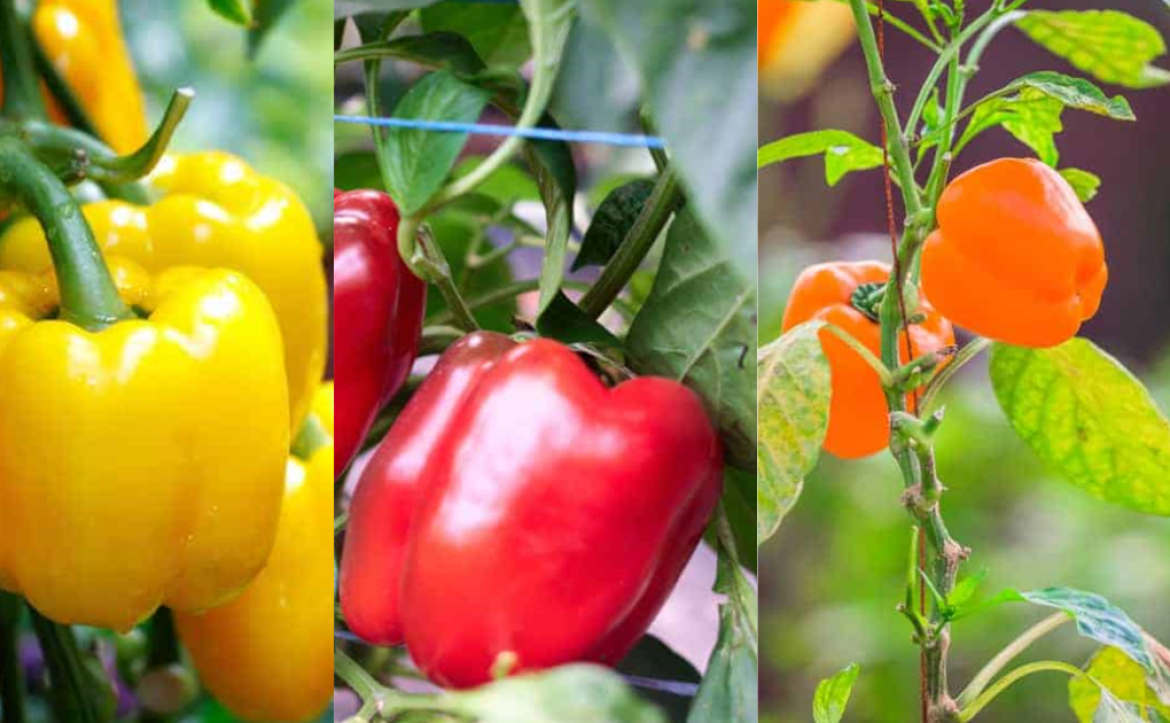
We know that bell pepper usually originates from South America and Mexico, and we lovingly call it sweet pepper. Another name for it is Capsicum. We witness this amazing color change from green to yellow, orange, and finally red, typically occurring two weeks after the last frost. Apart from its vibrant colors, bell pepper provides a sufficient amount of vitamin C and is delicious to eat. You can collect its seedlings from seeds or purchase them from local stores or nurseries.
Types of bell peppers
You can choose from a variety of colors and types of bell peppers available in the market. Some of the popular options include:
Canary bell: yellow bell peppers
California Wonder
Big Red: red bell peppers
Coral Bell
Chocolate Beauty: mouth-watering bell peppers
Purple Beauty: Deep purple heirloom peppers
- Canary bell – yellow bell peppers
This wonderful yellow bell pepper takes about 105 days to grow to meet your kitchen needs. During this period, it grows to about 10 cm.
- California Wonder
This mosaic virus-resistant type of bell pepper is green but tasty. However, it will be most delicious when fully ripe, about 75 days after planting. This variety produces the largest fruits, ranging from 4 to 4.5 inches (10 – 11.5 cm) in size.
This pepper is ready to eat in about 70 to 80 days, although it remains green and resistant to mosaic virus during that time. It grows to about 10 to 12 cm and is the largest variety of all bell peppers.
- Big Red – red bell peppers
You can collect this attractive red pepper in 70 to 80 days. During this period, it will grow to about 10 cm, and you can enjoy its thick flesh as a large fruit.
- Coral Bell
This unsightly beautiful orange fruit grows in about 75 to 90 days, reaching a maximum size of about 10 cm. Despite its appearance, this orange fruit is as good as it looks.
- Chocolate Beauty – mouth-watering bell peppers
This deep brown, tobacco mosaic virus-resistant, mouth-watering bell pepper with extremely sweet flesh takes only 67 to 70 days to grow.
Thick and very sweet flesh flavor can be experienced in this deep brown bell pepper, which is resistant to tobacco mosaic virus. You can collect this bell pepper in about 65 to 75 days.
- Purple Beauty – Deep purple heirloom peppers
These deeply purple heirloom peppers grow to 7 to 10 cm in about 70 days, fitting well in your kitchen, and everyone in the family will want to enjoy them.
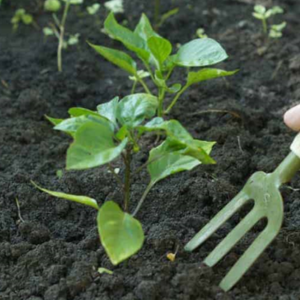
How to Plant Bell Pepper (Garden)
Almost all of the six types of bell peppers I’ve discussed here are easy to grow from seed. Generally, your bell peppers will be ready within 60 to 105 days.
If your climate is suitable for bell pepper production, you can start gardening for this vegetable. The best time to plant bell pepper seeds is from February to April. If you are an early gardener, be sure to purchase bell pepper seedlings from a local nursery or horticulturist instead of seeds.
You should start sowing seeds two months before the last frost in spring. Seeds should be sown in a place where the temperature is normal, i.e., neither too hot nor too cold. Proper water drainage and fertile soil should be selected. If the temperature is between 16 degrees Celsius and 26 degrees Celsius, you will see the first seedlings in about 10 days. Be sure to add some compost to the soil before sowing for best results. Your young seedlings will be strong if you have the right soil and weather conditions for planting.
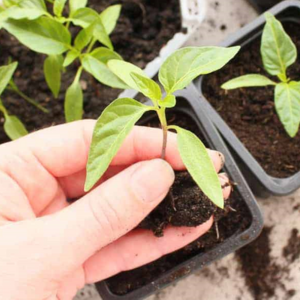
Transplantation of bell pepper seedlings
When your seedlings reach a height of 20 cm, you can plant them in a container or in your garden. If you are planting in pots or containers, you can use a pot of about six gallons. Otherwise, you can plant the saplings in your garden.
When the seedlings emerge from the seeds, they should be placed in an area where the temperature is normal at night and slightly warm during the day before planting in a container or garden. This means keeping the seedlings outside during the day and at night at a normal temperature, i.e., where the seeds were sown. After about a week of doing this, you will find the seedlings suitable for planting in a container or garden.
In colder regions, where the temperature drops below about 16°C overnight, the seedlings would have grown faster.
Caring for bell pepper plants
Plant your bell pepper seedlings 1.5 feet apart for adequate air and light.
Soil
Sandy or loamy soil rich in organic matter is important for the cultivation of this vegetable, and the pH value should be below seven, i.e., between 5.5 to 6.5. It is better to add some lime if needed. Since plant growth is slow in cold regions, black plastic should be used in the soil to increase plant warmth.
Light
Your bell pepper seedlings need about eight hours of sunlight a day to produce healthy and nutritious fruit. For this, choose a location in the garden where the plants receive suitable light.
Temperature
The minimum night temperature for these bell pepper seedlings is 13 to 14 degrees Celsius, and you must provide a temperature of 20 to 32 degrees Celsius during the day. If you want to protect your plants from temperature drops, you should use a plastic wire cage. In case the temperature gets too high, provide some shelter.
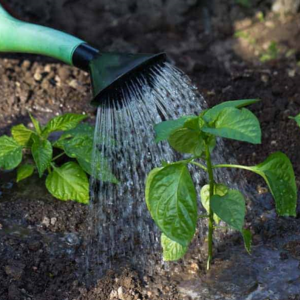
Mulching and Watering
To keep the shallow roots of your bell pepper plants free of weeds and moist, spread organic mulch such as straw around the roots.
If you are growing bell peppers in a warm region, water the seedlings regularly, i.e., every week (2.5 – 5 cm), and keep the plants moist, especially during the flowering and fruiting period. In that case, you must avoid wet soil. It is better to check the soil moisture up to about 15 cm deep.
Fertilization and weeding
However, apply compost to the soil after your first fruit production and before planting. Be careful not to over-fertilize, as high-nitrogen fertilizers promote leaf growth and require calcium and phosphorus in the soil for flower and fruit growth.
If weeds grow around your plants, they will hinder their growth. If the seedlings are not growing at the right time, you will not get any flowers and fruits at the right time. So, carefully remove the unwanted weeds around the plants. Using black plastic is a good way to control weeds.
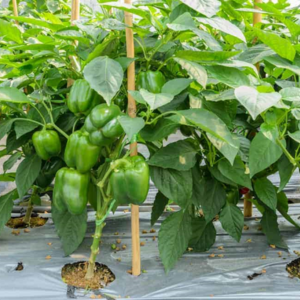
Support
Use a 1.2-meter bamboo as support to prevent your plants from bending and breaking. Since the roots of bell peppers are not deep and the fruits are quite heavy, you need to use sturdy bamboo. The bamboo should be tied lightly to the plant, and it should be thin.
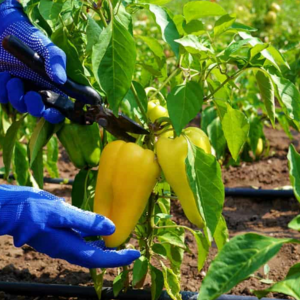
Collection of bell peppers
It will take about three months for the bell pepper seedlings you planted to grow. During this period, the fruits will be sweet, and the amount of vitamin C will increase. Cut the fruits with scissors when they are ripe before the first frost.
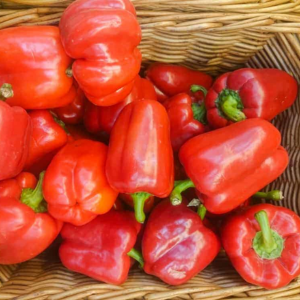
Preserving bell peppers
These peppers can be stored in the refrigerator and dried in the sun. If you like pickles, you can use them to make pickles, which are very tasty. If the weather is cold during the cold season, you can keep the peppers in a suitable place with a temperature of 20°C and a relative humidity of more than 95%. At this time, they will turn completely red and start losing water. Even then, they will not lose any flavor for up to a month. You can dry the chilies in the oven to use them in the winter season. In that case, the temperature must be 60 degrees Celsius. Cut each pepper into 1.3 cm thick slices and steam for 10 minutes. Then store them in a bag.
Bell pepper diseases
Bell peppers are susceptible to some diseases caused by insects. Therefore, when buying pepper seedlings, you must ask the nursery which variety has the highest disease resistance. Here, I will mainly discuss three types of diseases:
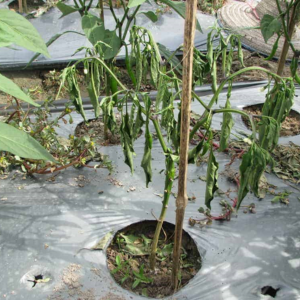
Damping-off:
This disease is usually caused by fungi. You will notice that the leaves turn slightly yellow and wrinkled. Eventually, the plant will die due to lack of complete photosynthesis, disrupting its growth. If you face this problem, seek assistance from the nearest nursery. Before planting seeds or seedlings, ensure they are fresh and of high quality.
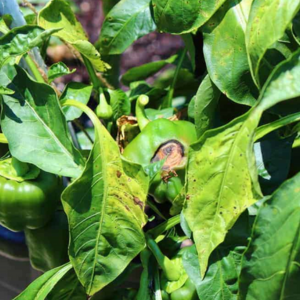
Blossom-end rot:
This disease occurs when the pH value is imbalanced, resulting in brown or black lesions on the edge of the flower. The fruits will not ripen properly and will remain raw. To address this issue, increase the concentration of lime and calcium in the soil.
